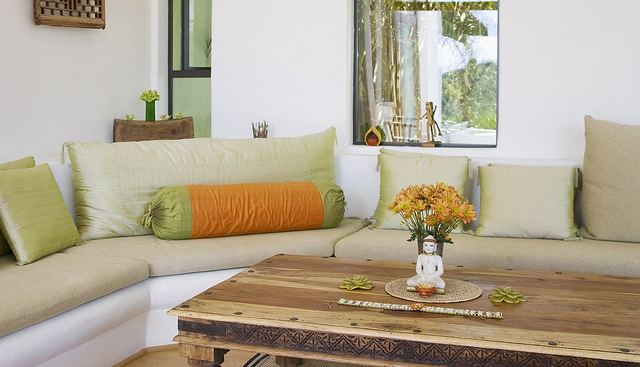Fine wood furniture is one of the most coveted and expensive ingredients of the house interior, and a proper care can make it last for many generations to come. However, upholstered pieces are equally important as they provide the much needed comfort, texture and colour. So, what are the best ways to preserve our beloved furniture? Stay tuned for our selection of handy tips and tricks.Fine wood
Preventive measures
First and foremost, this kind of furniture should be placed away from direct sunlight and heat. Wood contains a great deal of moisture in its natural state, so fine wood pieces shouldn’t be kept near heating devices or in the attic (humidity!). Similarly, sunlight can cause it to fade and lose its premium look.
All sorts of physical damage can also diminish the pristine look of the wooden furniture. Make use of coasters, trivets and thick cloth covers to protect the immaculate finish of your quality dining tables.
Cleaning
When dusting is all your wooden pieces need, acquire a lamb’s wool duster or a microfiber cloth for the best results. These two can effectively collect the fine grains of dirt.
Still, dusting with a dry piece of cloth can potentially scratch the surface of the wood. That’s why you should use a damp cloth from time to time with a spritz of specialised solution or polish. Note that these agents don’t go directly on the wood surface, but on the cloth. Lastly, follow the grain of the wood to avoid cross-grain marks.
Gorgeous fine wood items demand occasional deep cleaning procedure. Greasy grime and smoke film require a special mix of soap and water and a natural sponge. Massage it to remove the dirt, then rinse and dab the extra water with non-flaky cloth.
If you’re in two minds about whether you should use wax or polish, you should know that these should never be combined (the mix would devise a gummy disaster). For starters, wax leaves a long-lasting coat, but the process requires some elbow grease. Polish, however, is fairly easy to use, but when applied in excess, it can create a thick film of oil and dirt.
Upholstered pieces
Did you know that dirt and dust have a sandpaper-like effect on the fabric of your upholstered furniture? Vacuum it once a week, and lift the removable sections to catch the crumbs stuck underneath. These are some other ways to keep your upholstery fresh and clean:
- Rotate and swap: We all have a favourite piece of furniture and our own “best seat in the house”, but the signs of wear are quick to show. That’s why you should flip the removable cushions and swap positions of the upholstered furniture for a more even effect.
- Arm caps: The high impact areas like armrests, seat cushion and back should be protected with a masterfully tailored covers of the same fabric for protections.
- Slipcover: While arm caps cover key points, slipcovers conveniently cover the entire sofa during the hot season to soak in the sweat and oils.
- Protection: Utilise the spray that generates an anti-spillage and anti-stain coat.
Leather
Since it’s a natural material, you can keep leather in great condition for years with smart and regular upkeep. These are some basic tips for maintenance of leather furniture:
- Much like fine wood, leather is sensitive to excessive heat and sunlight
- Uncoated leather demands frequent dusting. Art gum eraser is the only solution for the possible stains and soil
- Coated leather is kept in optimal state with adequate creams and conditioners (twice a year) and regular vacuuming
- Don’t use unsuitable products!
Pro tip: Investing in quality furniture will allow you to keep it for decades with minor maintenance costs.
Once you acquire a perfect set of furniture, it’s wise you keep it in original state for as long as you can. Utilise our tips and you’ll give your furniture the best possible treatment.

